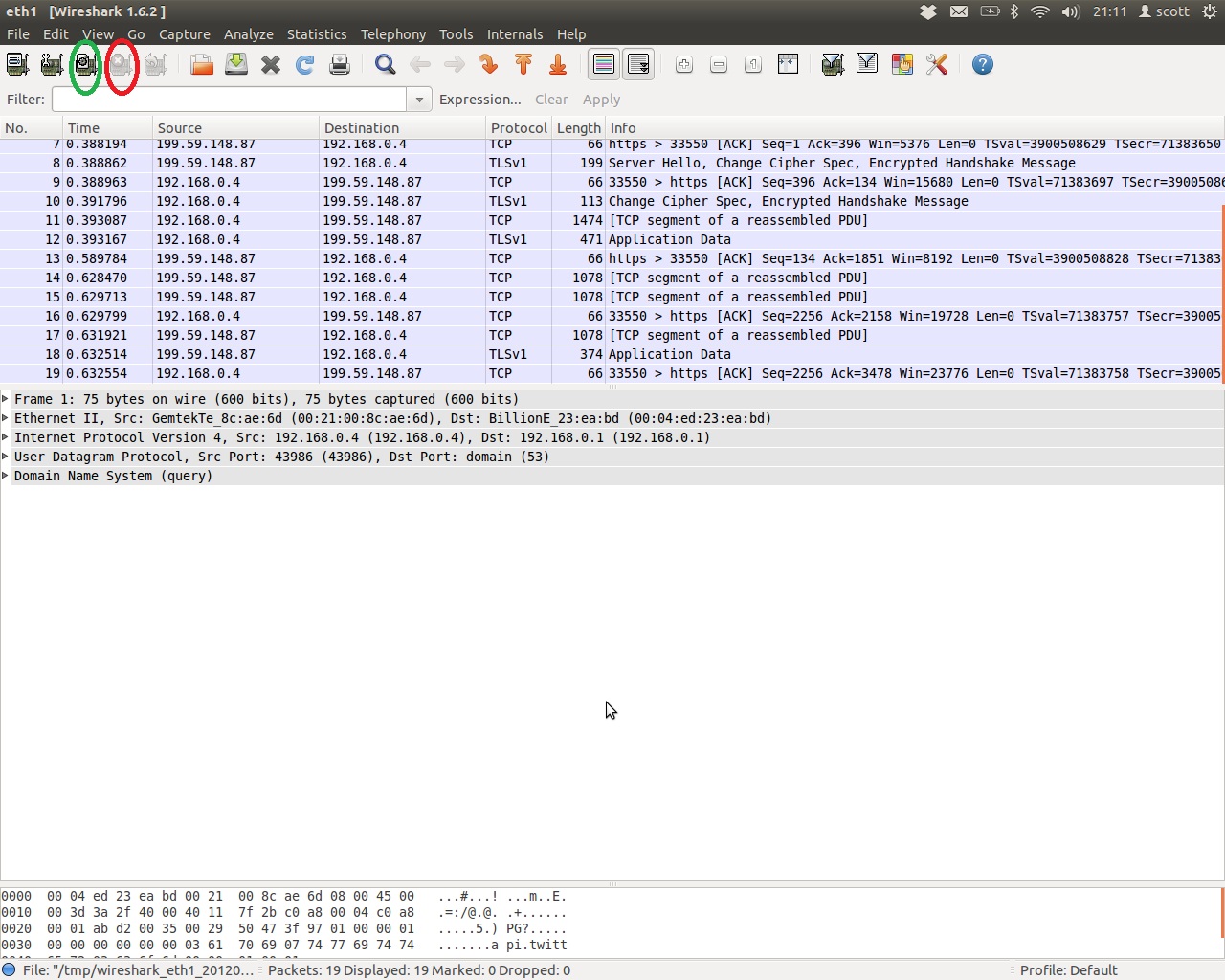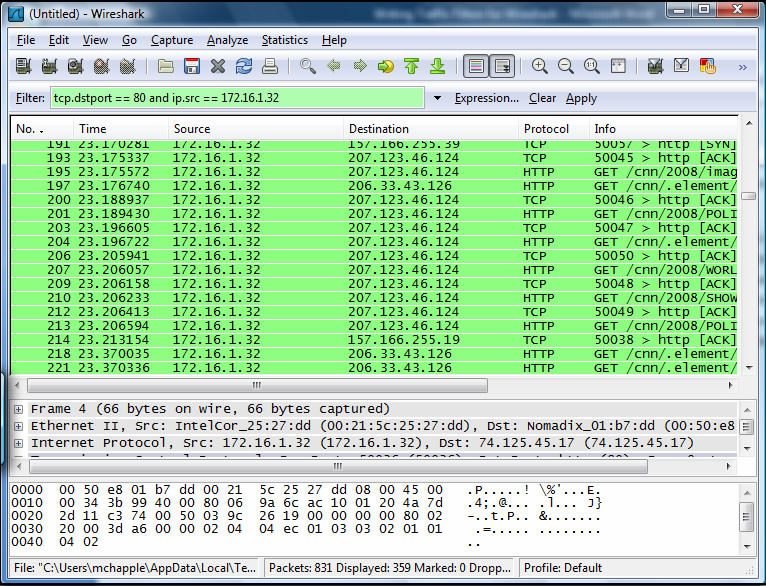

You might have expected you’d type this filter like so: ip.addr !=192.168.4.14

It’s counterintuitive because the filter contains the equality operator ( =). This filter excludes all packets sent to or from 192.168.4.14. The details of the highlighted packet are displayed in the two lower panes in the Wireshark interface. The packets are presented in time order, and color coded according to the protocol of the packet. If Wireshark isn’t capturing packets, this icon will be gray.Ĭlicking the red square icon will stop the data capture so you can analyze the packets captured in the trace. This gives you the opportunity to save or discard the captured packets, and restart the trace. Shark fin with circular arrow: If this is green, clicking it will stop the currently running trace.If Wireshark isn’t capturing packets, this icon will be gray. Square: If this is red, clicking it will stop a running packet capture.Shark fin: If this is blue, clicking it will start a packet capture. If Wireshark is capturing packets, this icon will be gray.The highlighted icons in the image above indicate the following, from left to right: Note that the syntax for capture filters is slightly different than that for displays.

Of course, for high-traffic networks, traces can quickly become very large, so filtering at capture makes sense in this scenario. You don’t want to inadvertently miss a network event that explains the situation you’re investigating due to your capture filter.

This way, we know everything that happened is in the trace. We prefer to capture everything and filter out anything we don’t want to see when doing an analysis. You can set filters to reduce the amount of traffic Wireshark captures. On the next screen, press Tab to move the red highlight to “” and press the Space bar. Press Tab to move the red highlight to “” and press the Space bar. On Manjaro, use this command: sudo pacman -Syu wireshark-qtĭuring installation, you’ll see the screen below, recommending that you don’t run Wireshark as root.
#WIRESHARK FILTER BY IP INSTALL#
On Fedora, type: sudo dnf install wireshark To start the installation on Ubuntu, type: sudo apt-get install wireshark The data capture elements of Wireshark will still run with elevated privileges, but the rest of Wireshark runs as a normal process. We can still restrict who has the ability to run Wireshark. This requires a few extra setup steps, but it’s the safest way to proceed. It’s far more secure to run Wireshark with a regular user account.
#WIRESHARK FILTER BY IP CODE#
Best security practices advise that as little code as possible should run with elevated privileges-especially when its operating at such a low level. Wireshark contains over 2 million lines of complicated code, and it interacts with your computer at the lowest level. However, installing Wireshark so that only those with root privileges can use it means all its components will run with elevated permissions. You might not want everyone to be able to see what’s happening on the network. Saying no to this might be an attractive idea. When you install Wireshark, you’re asked whether anyone using a non-root account should be able to capture network traces. If you don’t understand how filters work in Wireshark, you’ll never get out of first gear and throttle the capabilities of the software. There are subtleties to their syntax that make it easy to write a filter and get a result that doesn’t meet your expectations. Wireshark’s filtering capabilities are second to none, with great flexibility and resolving power. You’re able to inspect any packet in the tiniest detail, map out network “conversations” between devices, and use filters to include (or exclude) packets from your analysis. When the capture is complete the trace can be stepped through, packet by packet.


 0 kommentar(er)
0 kommentar(er)
